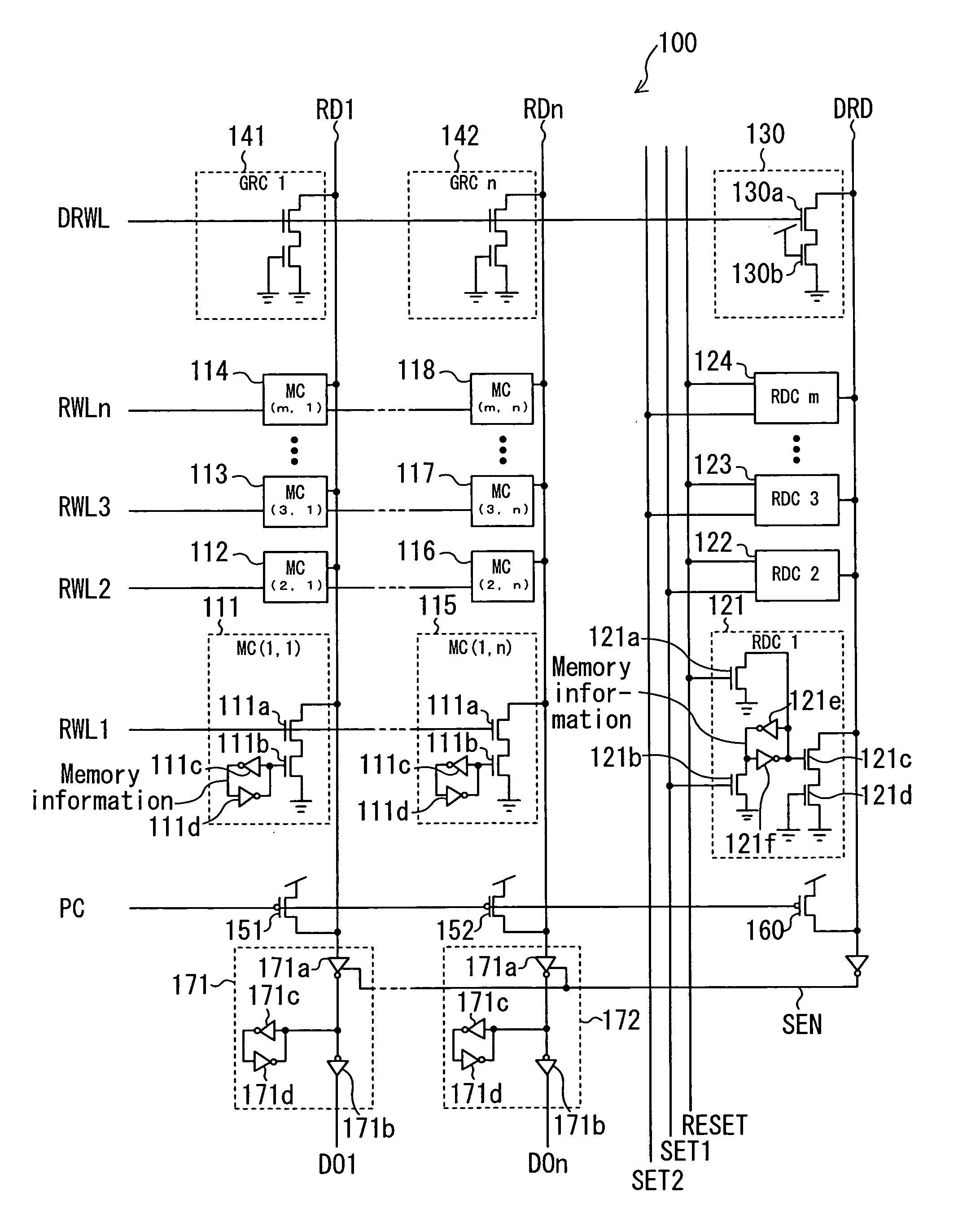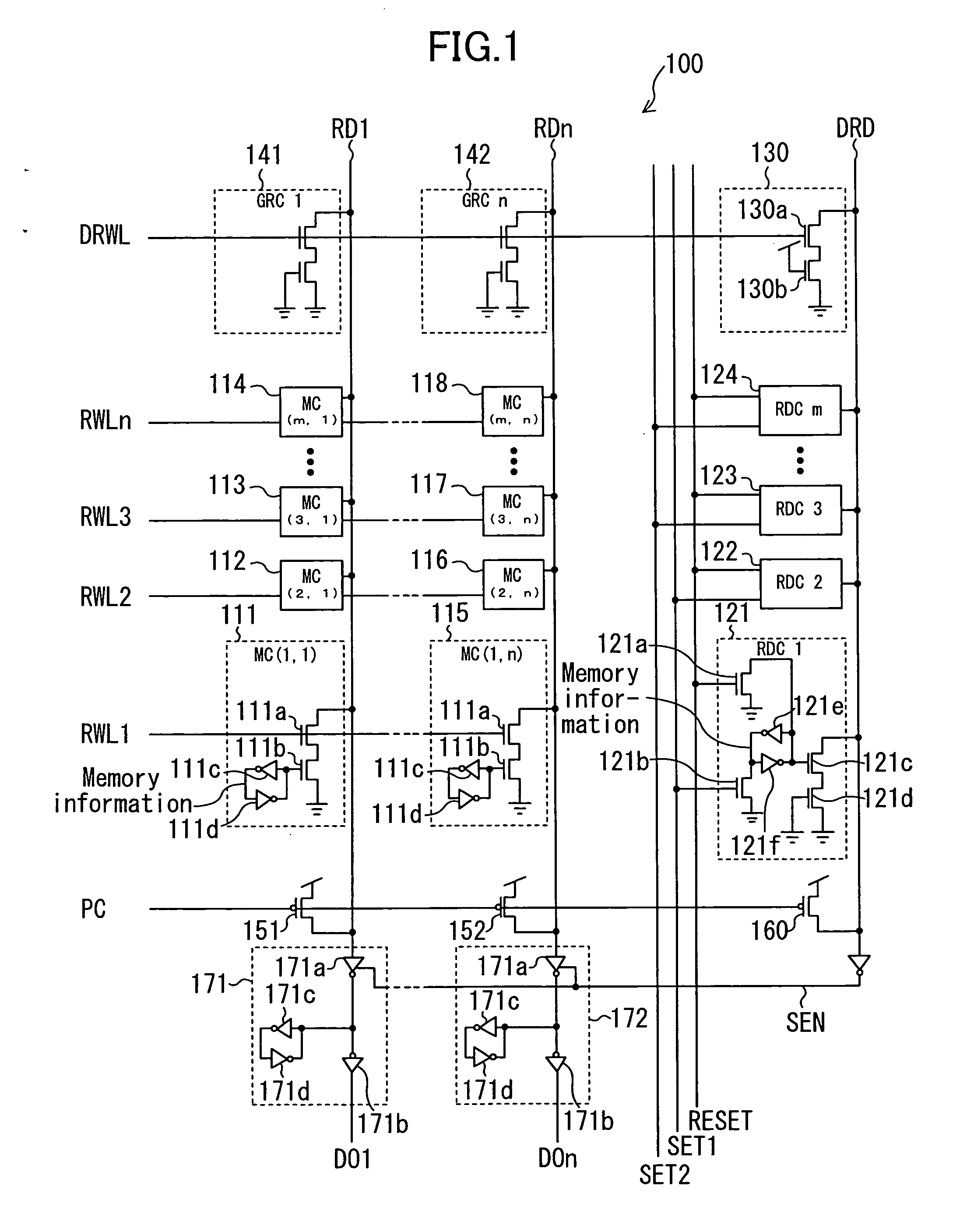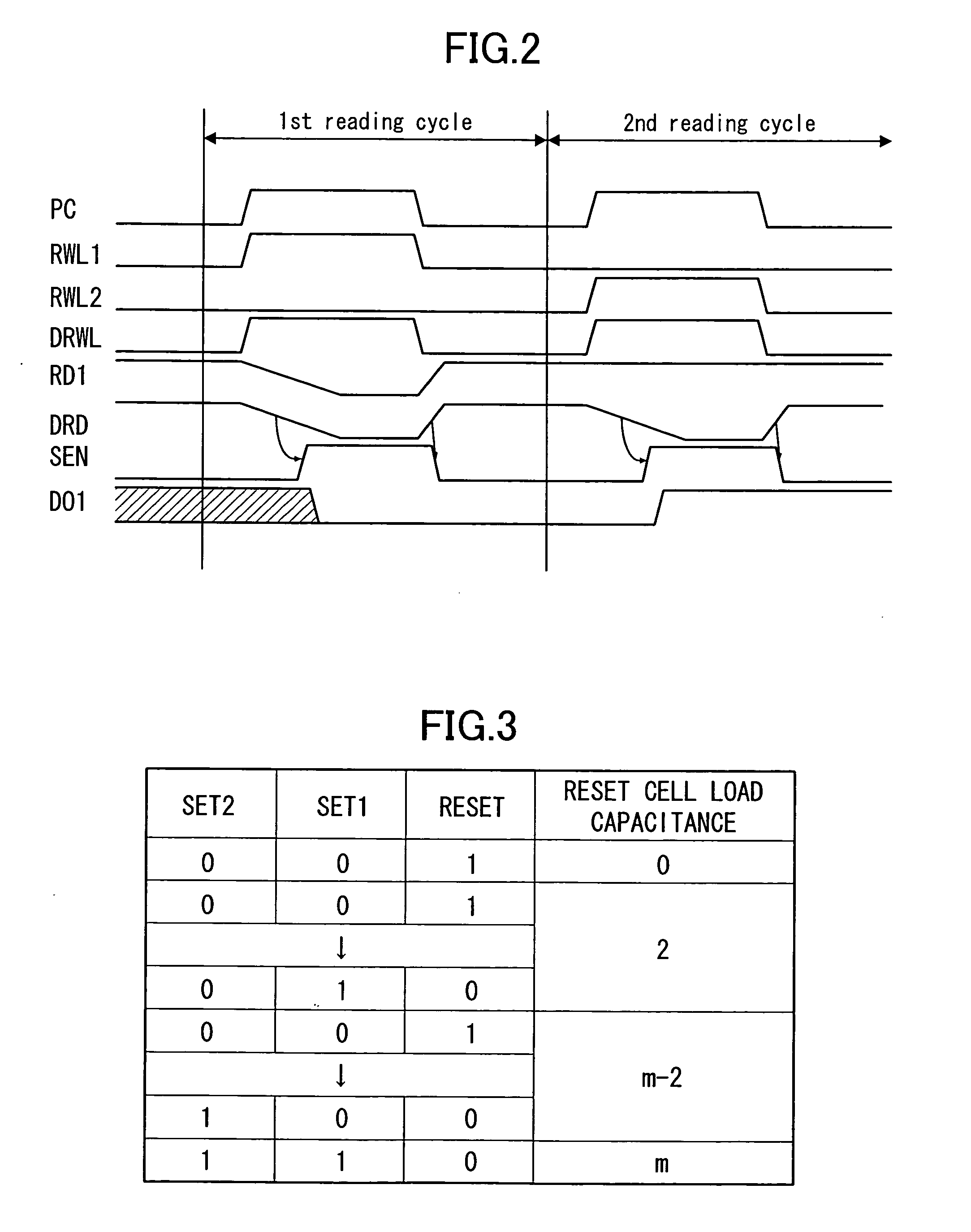Semiconductor memory
- Summary
- Abstract
- Description
- Claims
- Application Information
AI Technical Summary
Benefits of technology
Problems solved by technology
Method used
Image
Examples
embodiment 1
[0093]FIG. 1 is a block diagram showing a structure of a semiconductor memory 100 according to embodiment 1 of the present invention. It should be noted that elements of the circuit relevant to a writing operation are not shown.
[0094] The semiconductor memory 100 includes memory cells (MC) 111 to 118, reset dummy cells (RDC) 121 to 124, a reference cell 130, gate replica cells (GRC) 141 and 142, precharge transistors 151 and 152, a dummy precharge transistor 160, and output circuits 171 and 172.
[0095] The memory cells 111 to 118 have the same structure and are arranged in a matrix of m rows by n columns. The memory cells 111 to 118 each output information stored therein to a read line connected to the memory cell (any one of read lines RD1 to RDn) according to the potential of a read word line connected to the memory cell (any one of read word lines RWL1 to RWLn). In a reading operation, any one of the read word lines RWL1 to RWLn which is selected according to an address signal (...
embodiment 2
[0135]FIG. 4 is a block diagram showing a structure of a semiconductor memory 200 according to embodiment 2 of the present invention. The semiconductor memory 200 is different from the semiconductor memory 100 in that the semiconductor memory 200 includes memory cells 211 to 216 in place of the memory cells 111 to 118 and reset dummy cells 221 to 223 in place of the reset dummy cells 121 to 124 and further includes AND circuits 281 to 283. In the following descriptions of this embodiment, elements having the same functions as those of embodiment 1 are denoted by the same reference numerals, and the descriptions thereof are herein omitted.
[0136] The memory cells 211 to 216 have the same structure and are arranged in a matrix of m rows by n columns. The memory cells 211 to 216 each output information stored therein to a read line connected to the memory cell (any one of read lines RD1 to RDn) according to the potential of a read word line connected to the memory cell (any one of read...
embodiment 3
[0150]FIG. 7 is a block diagram showing a structure of a semiconductor memory 300 according to embodiment 3 of the present invention. As shown in FIG. 7, the semiconductor memory 300 includes an AND circuit 380 in addition to the components of the semiconductor memory 200.
[0151] Due to the addition of the AND circuit 380, the precharge operation by the precharge transistors 151 and 152 is controlled by dummy precharge signal DPC and the potential of the dummy read line DRD.
[0152] An operation of the semiconductor memory 300 having the above-described structure is described with reference to FIG. 8.
[0153]FIG. 8 is a timing chart showing the voltage waveforms of dummy precharge signal DPC, the read word lines RWL1 and RWL2, the dummy read word line DRWL, the dummy read line DRD, the read line RD1, precharge sense amplifier enable signal PSEN (which is the inverse of the dummy read line), and data output DO1 in a reading operation. It should be noted that, in the following descripti...
PUM
 Login to View More
Login to View More Abstract
Description
Claims
Application Information
 Login to View More
Login to View More - R&D
- Intellectual Property
- Life Sciences
- Materials
- Tech Scout
- Unparalleled Data Quality
- Higher Quality Content
- 60% Fewer Hallucinations
Browse by: Latest US Patents, China's latest patents, Technical Efficacy Thesaurus, Application Domain, Technology Topic, Popular Technical Reports.
© 2025 PatSnap. All rights reserved.Legal|Privacy policy|Modern Slavery Act Transparency Statement|Sitemap|About US| Contact US: help@patsnap.com



